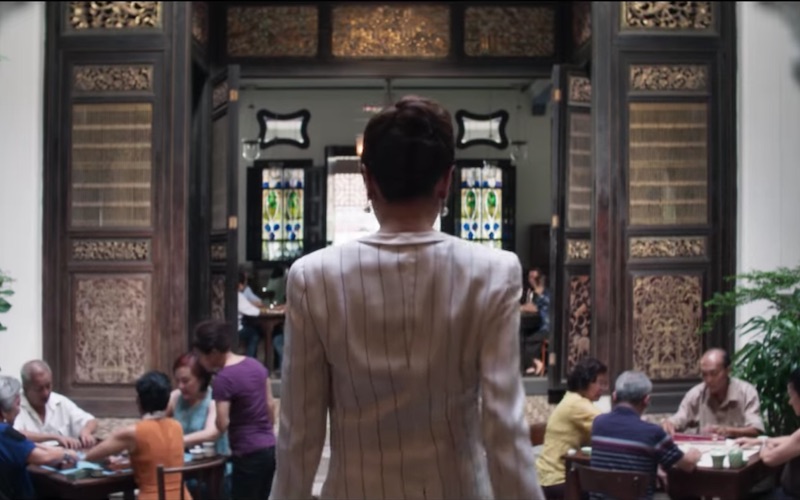At this point in time, your social media news feed should be filled with either sad tributes to Inuka (goodnight, sweet prince) or angry posts about that Crazy Rich Asians trailer and how the movie might misrepresent Singapore when it comes out in August.
Though we’ve heard so many remarks and comments from crazy regular Singaporeans, one lady who straddles both worlds of being an Asian in America and an Asian in Asia has published her thoughts on the movie, explaining how — as someone who really grew up among the hyper-affluent here — it might actually be realistic. Now a co-founder and chief executive of Indonesian FinTech startup wobe, Adrianna Tan also threw light on the historical background of supremely wealthy families, and how British colonization played a huge part in establishing the deep divide between the haves and have-nots.
“Not enough Asian-American criticism of #CrazyRichAsians is aware of the realities in this part of the world,” Tan wrote in a long, but highly interesting Twitter thread. You can read the whole thread here, or check out this Reddit post if you don’t like reading in the chopped-up format. Below are some highlights of her composition.
On the very real world of Crazy Rich Asians
The world that #CrazyRichAsians portrays is real in Singapore. @kevinkwanbooks & myself probably ran in similar circles.
My friends at school ate $30 lunches daily at nice restaurants, age 13; vacationed in private islands with royalty, age 15. I was an outsider in this world.
— Adrianna Tan (@skinnylatte) April 25, 2018
People talking like they’re from the US or UK, i.e. not like Singaporeans? Real life #crazyrichasians talk like that! It’s authentic.
They have very little to do with the lived experiences of most Singaporeans you and I know, but that’s why they’re the top 0.05%
— Adrianna Tan (@skinnylatte) April 25, 2018
This is not the world of the Chinese Singaporean friend you think is rich, who drives a car and has a condo and goes to Iceland on vacation. This is ‘live in the Waldorf-Astoria for 1 year while attending an exchange program from other ivy league college’ rich (true story I know)
— Adrianna Tan (@skinnylatte) April 25, 2018
This is not your Asian-American ‘be a doctor / lawyer!’ world, this is a world where if you brought home a lawyer or doctor your family would probably think you were marrying down – rich
— Adrianna Tan (@skinnylatte) April 25, 2018
Obviously, the real world of #crazyrichasians is overwhelmingly Chinese. That’s accurate. This world sometimes intersects with the world of Singaporean / Malaysian Indian merchant families, which is usually Sindhi.
— Adrianna Tan (@skinnylatte) April 25, 2018
On the problems of being a crazy rich Asian
I have little interest in real #CrazyRichAsians. I will not be watching it, because I could just open the Facebook pages of 20 friends from this world.
As an outsider, I think they all worry about the same things: love, family, and yes, even money.
— Adrianna Tan (@skinnylatte) April 25, 2018
It’s a different level of money worry, of course. It’s not ‘i have no more money for lunch’ worry, not even ‘not enough money for a Birkin’ (they have 50, already). It’s about debts or complex financial instruments their parents might have put them in;
— Adrianna Tan (@skinnylatte) April 25, 2018
It’s about the fear of ‘coming down in the world’, like we saw during the late 90s financial crisis (and my classmates grumbled about having to downgrade to a bungalow in the bad side of Bukit Timah – lol)
— Adrianna Tan (@skinnylatte) April 25, 2018
Even then I got the sense that the things they had which were intangible, unique, were not items, but access.
Today, I see many of those folks in marriages they hate running businesses they hate. I don’t envy their lack of ‘choice’.
— Adrianna Tan (@skinnylatte) April 26, 2018
On elite Asians emulating English aristocracy
Elite Asians in the former British colonies, like Singapore, have been Anglophiles for centuries. It’s not a new thing, not a mimicry of power. Elite Asians were those allowed to go to the right schools and enter the right circles.
— Adrianna Tan (@skinnylatte) April 25, 2018
In Singapore, like in other colonies, divide and rule extended also to various ethnic groups. These precede current understanding of ethno/national borders. It came down to what type of Chinese, Indian, you were.
— Adrianna Tan (@skinnylatte) April 25, 2018
e.g. Straits Chinese (also known as Peranakan) found favour with the British. They straddled both worlds: emphasizing Chinese custom, speaking a creole of Malay & Chinese dialects at home. They tended to speak English better than new immigrants from China, etc.
— Adrianna Tan (@skinnylatte) April 25, 2018




